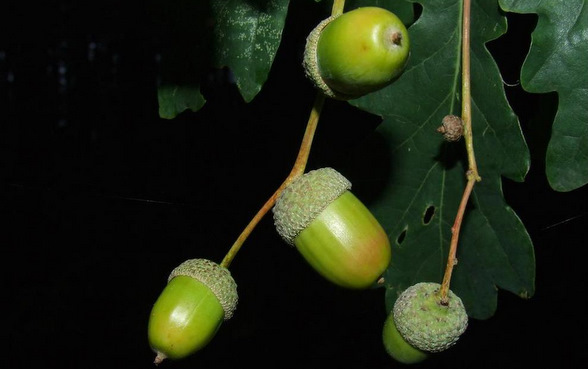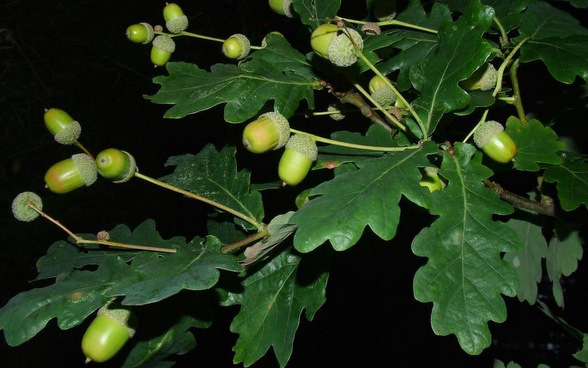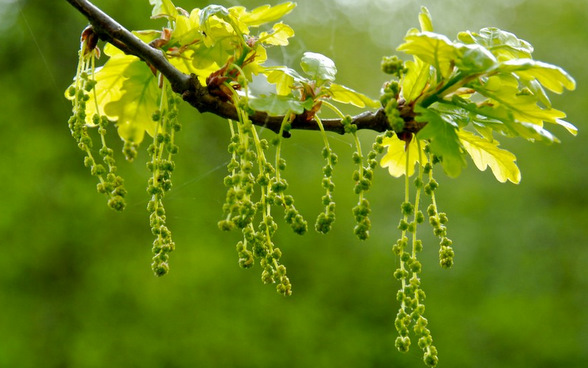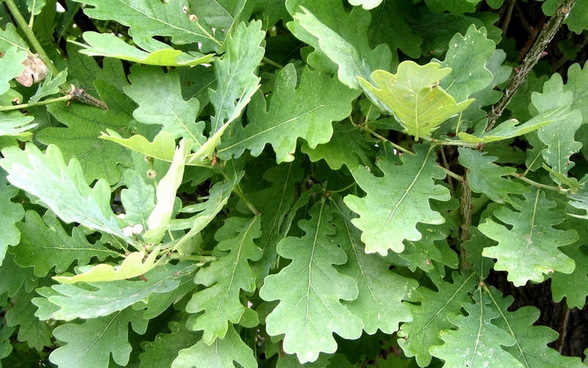A deciduous tree, usually 12 – 20 m high when planted in parks and gardens but can reach about 40 m high in its natural environment.
Its low, wide-spreading and rounded canopy is usually 10 – 18 m wide. Its trunk is typically short, with ridged dark grey to black bark.
Leaves
Dark green and oval to rectangular in shape with 3 – 7 rounded lobes on either side. They are 7.5 – 12.5 cm long and have a very short stem. They are pale blue-green underneath and turn tan to brown in autumn, before falling from the tree in late winter.
Flowers
Tiny, green to pale yellow, hanging in slim, cylindrical clusters (known as catkins).
Fruits/Seeds
Oval acorns, 2 – 2.5 cm long, grow singly or in clusters of 2 – 5 at the end of a 5 – 10 cm long stalk. A cap covers about one third of each acorn.
Field Guide
Improve your identification skills. Download your English Oak field guide here!





